After hosting ten exhibits in Hayward and two in Pleasanton, Bay Island Bonsai moved its annual exhibit to the Lake Merritt Garden Center in Oakland, California. The 13th annual event was a big success, drawing crowds of experienced bonsai folk as well as many who are new to the art. As the Garden Center contains two large rooms, we displayed all large bonsai in one room and all small and medium sized bonsai in the other. I really liked the split. At previous exhibits, large, impressive, trees like the black pine below would invariably end up next to much smaller trees. It was tough for the smaller trees to compete. By presenting like-sized trees together, following the convention employed at the Kokufu exhibit in Japan, it was easier to appreciate every tree in the room.
At the center of the exhibit was an old roughbark Japanese black pine that belonged to Mas Imazumi. It has long been a favorite of mine.

Roughbark black pine – Chinese antique pot
About ten years ago the tree was much weaker than it is now. I expect its renewed health will lead to some styling enhancements in coming years.
One of the fullest trees in the exhibit was a prostrata juniper. The tree is large – and heavy! It is also well-balanced, suggesting clear movement to the right.
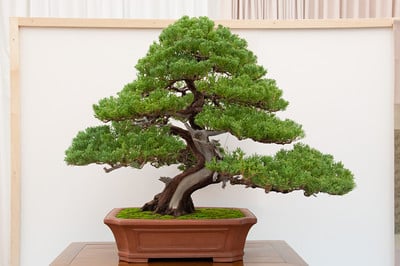
Prostrata juniper
A Western juniper, only a few years out of the ground, made an interesting contrast to the prostrata juniper. Its young foliage hints at the tree’s future shape, leaving the viewer to appreciate the interesting movement and deadwood characteristic of many collected Westerns.
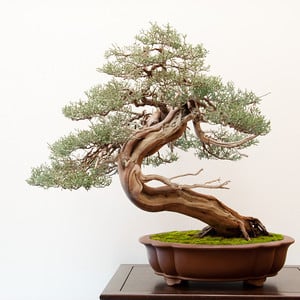
Western juniper
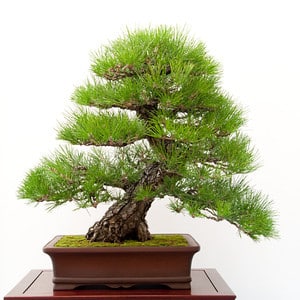
Japanese black pine
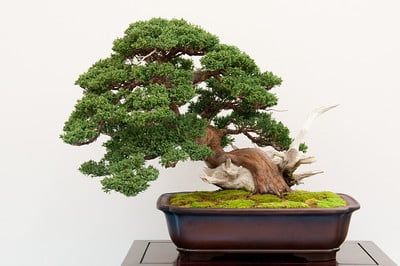
Shimpaku
The blue atlas cedar below has been a fun project. I helped repot it more than ten years ago during its initial styling. Planted in a 20-plus gallon container, the tree taught me how useful a reciprocating saw can be during repotting season. Now far more refined, the tree is well on its way to become an impressive cedar bonsai.
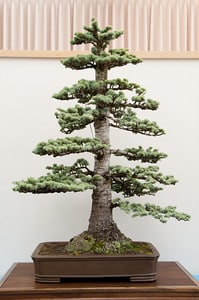
Blue atlas cedar
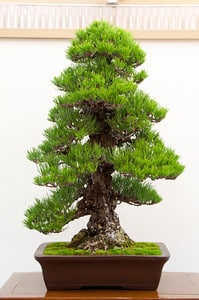
Cork bark black pine
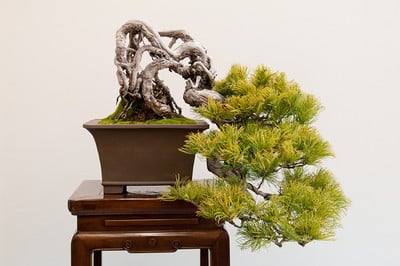
White pine
The semi-cascade white pine below is another favorite of mine. The delicate foliage provides a nice contrast to the heavy trunk. One of two white pines once affixed to a large stone by Yasuo Mitsuya, the pine has more recently found its home in a custom-built pot by Michael Hagedorn.
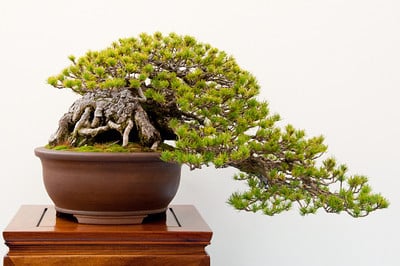
White pine – Michael Hagedorn pot
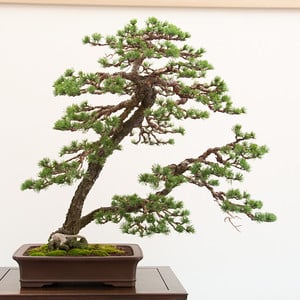
Scots pine
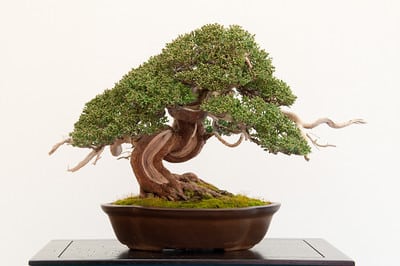
Shimpaku – old Yamaaki pot, Kinkazouin
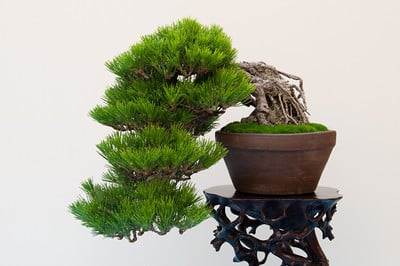
Japanese black pine
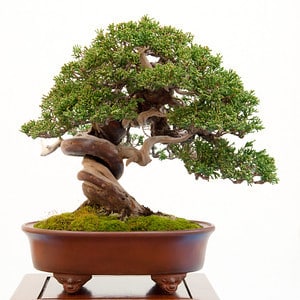
Shimpaku – Chinese antique pot, check out the feet!
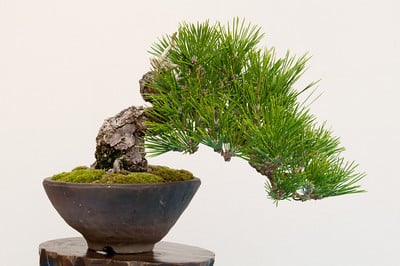
Japanese black pine
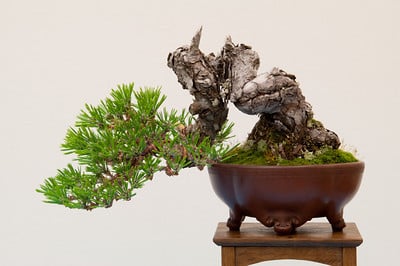
Japanese black pine – Chinese antique pot
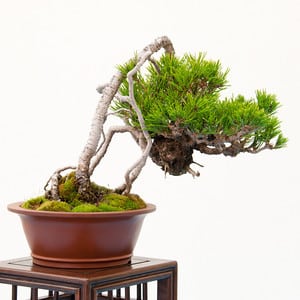
Exposed root red pine
The exhibit featured deciduous bonsai as well. Although not as well-represented as the coniferous trees in the exhibit, the bare trees suggested that BIB members appreciate a wide variety of bonsai.
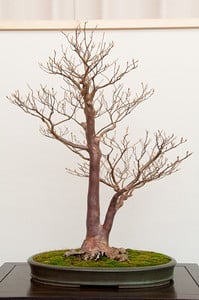
Stewartia – Michael Hagedorn pot
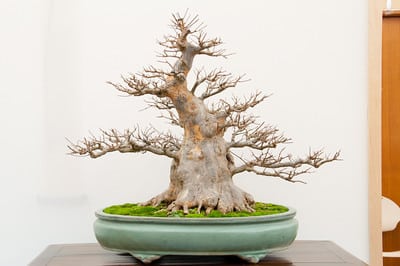
Trident maple
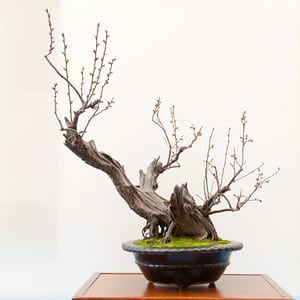
Ume
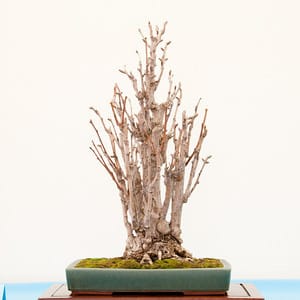
Ginkgo
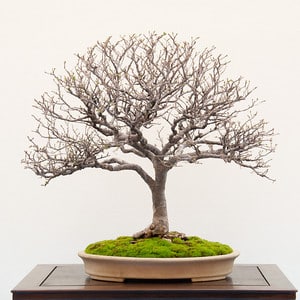
Catlin elm
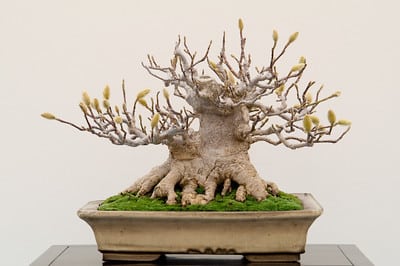
Star magnolia – Chinese antique pot
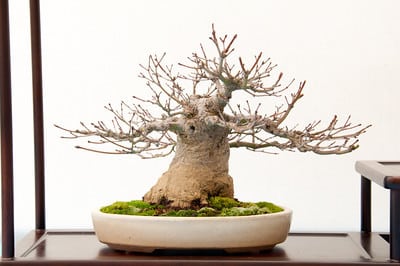
Japanese maple
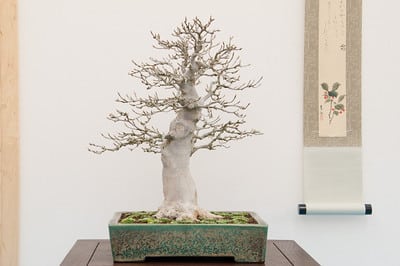
Trident maple – Koyo pot
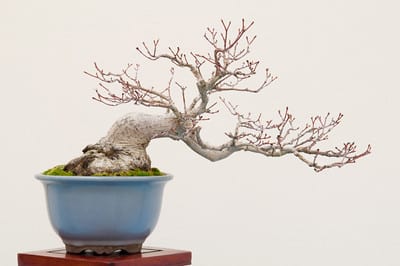
Japanese maple
The broadleaf evergreens, on the other hand, were simply not well-represented at this year’s exhibit. That will change in future exhibits. For now, here’s an olive that has only been trained as bonsai for a few years.
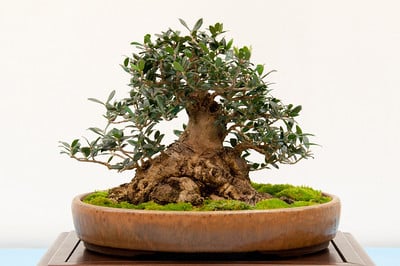
Olive – off to a great start
Mas Nakajima provided an installation of his suiseki art for the exhibit. I heard several explanations behind the arrangement, but my favorite comment about these stories belongs to Mas: “Too much story,” he said. The painting, and the stones, were a welcome addition to the exhibit.
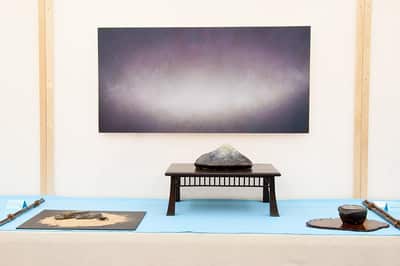
Suiseki art by Mas Nakajima
Subscribe to Bonsai Tonight
New Posts Delivered Every Tuesday and Friday
Steve Moore says
Thanks for posting, Jonas. That rough-bark JBP is quite impressive, to say the least. I appreciated seeing them all.
Someday I’d like to see a true cedar styled according to the typical growth habit of full-sized Atlas or Lebanon cedars. Or maybe I should try that myself. 🙂
Tom M says
Great display, really like the trunk on that Western Juniper. Sorry if I missed this, but did you show any trees?
xwires says
Thanks Tom. I showed two trees, the trident maple from the previous post and a small black pine (I forgot to take a picture at the show!).
@Steve – I’d like to see a cedar in that style as well.
japanesepots says
Hello Jonas,
I have a quick question. The pot that old JG Shimpaku is in, you have it listed as both early Yamaaki and KinKaZoEn. My information has Kinka as an early 1900s pot maker, pre Yamaaki 1st generation Katoaka Akitsugu, I’m curious about this, and would like some more information if you have any. Here’s the only “Kinka” stamp I have on file in the chops database online.
http://japanesebonsaipots.net/chop-and-signature-resource/kinkajapanese-early-1900s/
Thanks for any information you can provide,
Ryan
http://japanesebonsaipots.net
xwires says
Hi Ryan – good question. I was told the chop said Kinkazouin, literally Kinka- zou (maker) in (stamp). And the pot wasn’t referred to as Yamaaki but Yamaaki ojiisan, or grandfather. I don’t know if this was intended as a literal or figurative grandfather, but it seemed like there was a connection to Yamaaki, but older. The guess was that the pot was around 80 years old.
I bought another pot by the same maker – I’ve uploaded some photos here: http://dupuich.smugmug.com/Bonsai/Pots/21294838_4knBgh#!i=1695570907&k=bWpj3VJ
I hope this helps – and do let me know if you have additional information.
Thanks,
Jonas
John says
Jonas,
Thank you for letting me borrow the Kinkazou pot for the show. I have to laugh, I buy a lot of pots of different sizes, ages and sources. For this show, the Shohin twisty Itoigawa in the Antique chinese pot (with interesting feet) was borrowed from Boon, the Interesting little semicascade black pine was shown in an antique pot borrowed from Kenny Lam and Shimpaku from Jim Gremel was shown in the beautiful pot borrowed from you. Besides the great trees and marvelous prep work the thing that I just truly enjoy about BIB is the willingness to help, to share and to make sure that every tree is presented in the best possible light. Yes there is often a lot of competition, but the way that 99% of the members work together is truly gratifying. The funny thing is, I came in for a day and a half and then had to leave to travel to work for the weekend. But, I know the trees were well presented, repreped as needed and the show pictures look great. Boon runs a class act. John
xwires says
Thanks John – well put.